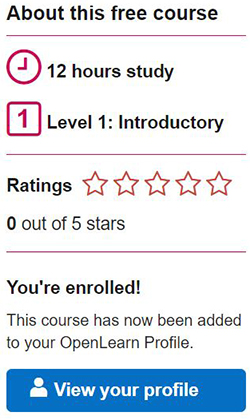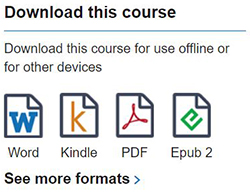Guidance for facilitators and teachers
If you are doing this as an individual learner, move on to the next section.
Why riot? Community, choices, aspirations has been designed to support critical thinking skills amongst young people aged 14+ and is for use in community, school, alternative and independent settings. The course is for young people, especially those growing up in contexts of social or political division and who may be at risk of engaging in violence and offers alternative pathways for making their voice heard around issues that concern them.
You are encouraged, as course facilitators and teachers, to explore the full course yourself, in advance of using it with young people to familiarise yourself with the course structure and themes of community, choices and aspirations, and its range of resources including media clips and interactive activities. This will allow you to work creatively and dynamically with this material and adapt it to your context and to identify where questions are explored in more depth at different points in the course.
Preparation
| Sign up to the course by clicking on the ‘enrol now’ button, which is on the right-hand column on the course description page, and on the top, middle banner throughout the course. Then complete the course to get to know its structure and range of resources available to you. You will know you are enrolled on the course by seeing the text: ‘You’re enrolled! This course has now been added to your OpenLearn Profile’ on the About this free course box. |
- Familiarise yourself with the case study central to this course – namely, the violent disturbances in the streets of Belfast in the summer of 2021 and the experiences of some boys involved in or affected by these disturbances, from the Shankill, a Protestant/Unionist/Loyalist area in Belfast, Northern Ireland.
- Think about the context in which you work, whether this case study resonates, how to use or adapt this case study, or introduce an appropriate case study in your setting alongside how you would structure your teaching/facilitating around this, especially if working with a different kind of group or context.
| For the media assets, download an offline (Epub3) version of the course or alternatively, the specific media assets you plan to use onto your laptop/PC, if you want to use these resources in a location with slow or unreliable internet. You can do this by looking for the ‘Download this course’ box, which appears in the left-hand column on the course description page, and then consistently in the right-hand column throughout the course. To download individual assets, there is a download option underneath the specific asset. |
Where to teach?
The course can be used in any setting you feel works for your group. For example:
- As an online resource to support group work (blended learning), for example in a community centre, youth club or school classroom setting.
- As an offline resource for use in an independent or detached setting where young people meet/spend time. You can do this by looking for the ‘Download this course’ box, which appears in the left-hand column on the course description page, and then consistently in the right-hand column throughout the course.
- As a resource for learners to log in and study themselves at home, whether on a smartphone or computer.
How to teach?
How you teach it is up to you, but below are some suggestions:
- Be creative and dynamic in how you teach this material, drawing on your own ways of teaching.
- Enhance or supplement the course material with your own material, local case studies or other resources where appropriate.
- When teaching in group settings, or when working offline you may choose to explore creative alternatives to a written submission with young people. You could take this approach in particular, for the reflection activity at the end of each session (Community [Tip: hold Ctrl and click a link to open it in a new tab. (Hide tip)] , Choices and Aspirations) to encourage learners to think about the core themes of the session, and what they have learned.
Course activities and completion
This course can be completed in different ways depending on what is appropriate to your setting. For example:
- By an individual learner working independently online (as they would do with a traditional Open University OpenLearn course). To gain an OpenLearn statement of participation, learners register with OpenLearn to create their individual learner’s profile, enrol on the course, and work their way through the course.
- By groups working with a facilitator or a teacher, using a learning profile set up by the facilitator to submit collective/group responses in each of the activities.
- Or a mix of both independent and group working in which the learner participates in group sessions but also completes the course themselves online to gain an individual OpenLearn statement of participation.
Your feedback
This course is currently in a pilot phase, and we are interested in learning how it is being used by educators like you. If you want to share your ideas on how you are using the course, the young people you are working with, or settings you are teaching it in, or if you want to stay in touch about Why riot? course development, we would love to hear from you. Please contact us (the ACT and Open University Why riot? team) at The Open University in Ireland Time to Think email: Ireland-Time-to-Think@open.ac.uk


